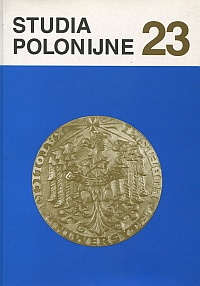The Polish Theatre in Los Angeles
Main Article Content
Abstract
The Polish theatre in Los Angeles was initiated in the 1940s and developed slowly. Its activity became more intense in the beginning of the 1950s, together with the arrival of large groups of Polish intelligentsia in South Carolina, mainly soldiers and their families. Those who had some skills in theatrical art took part in numerous national celebrations, holidays, and anniversaries, enriching them with artistic events. This made the organization “Self-help” to establish a Literary-Dramatic Circle at the beginning of the 1950s, and then - to set up a permanent post: a Dramatic Circle under the supervision of Alicja Skarbek-Kruszewska. Forty actors participated took part in the Dramatic Circle in the period of 1951-1956.
At the beginning of 1956 a Polish Theatre was established at the “Self-help”, which was named after A. Skarbek-Kruszewska after her death in 1960. The “Self-help” had morally and financially supported the Theatre until 1975, when the association joined the River's End Polish Centre, and the Theatre was dissolved. The Theatre largely consisted of amateurs. Through the period of two decades mainly Polish plays were performed for Polonia. It acted in the national and religious spirit, staging a religious-historical mystery play on the occasion of the celebrations connected with the millennium of the Baptism of Poland in 1966. The play was entitled “The Queen of Poland”, and then “Polish Bethlehem” written by Lucjan Rydel in which as many as 103 artists-amateurs took part.
During the break in the activity of the Polish Theatre (1967-1970) the Polish Experimental Theatre was established in Los Angeles by Jerzy Grotowski (1933-1999). He put on stage and filmed the play “Acropolis”. After the dissolution of the Polish Theatre under Alicja Skarbek-Kruszewska in 1975, Hanna Tyszkiewicz established in Los Angeles in 1982 a new permanent institution: the Helena Modrzejewska's Polish-American Theatre. Its task was to present Polish culture, Polish artists, theatrical classical literature, and modern plays not only among the Polish people, but also in American society. There were some misunderstandings in relation with the establishment of this theatre, and that led to the establishment of a Theatrical Study Group in Los Angeles, with Małgorzata Samborska at its head. After several years Hanna Tyszkiewicz intervened and Samborska gave up her job.
In 1983 a professional actress, Barbara Kraftówna, arrived from Poland. Hanna Tyszkiewicz employed her in the Theatre as artistic director. The Theatre staged Henryk Rozpędowski's drama Świadomość przemijającego czasu [Awareness of the Passing Time], Gabriela Zapolska's comedy Moralność pani Dulskiej [Lady Dulska's Morality] and then a few cabaret revues and plays. In 1988 Barbara Kraftówna collaborated with Prof. Anna Krajewska-Wieczorek from California University (UCLA) staged Kram z piosenkami [A Stall with Songs] by Leon Schiller with 40 actors. The play was then staged three times: in 1989 and 1990 and, additionally, in San Francisco. In 1990 Adam Mickiewicz's Dziady were put on stage. Among artists-amateurs Count Adam Tyszkiewicz, the great animator of the theatre, was most prominent. Hanna Tyszkiewicz was the driving force of the Polish-American Theatre. She fulfilled the function of the Chairwoman of the Board and was the only sponsor of the institution. Barbara Kraftówna's duty was to select a repertoire, actors and do rehearsals, most of which took place in Tyszkiewicz's residence.
From the time of the last two plays in 1990 the Theatre became inactive. Barbara Kraftówna went to Poland. The Theatre died a natural death. In order to preserve a vivid contact with Polish stage art, Polonia had to satisfy itself with performances played sporadically by theatrical groups from Poland.

